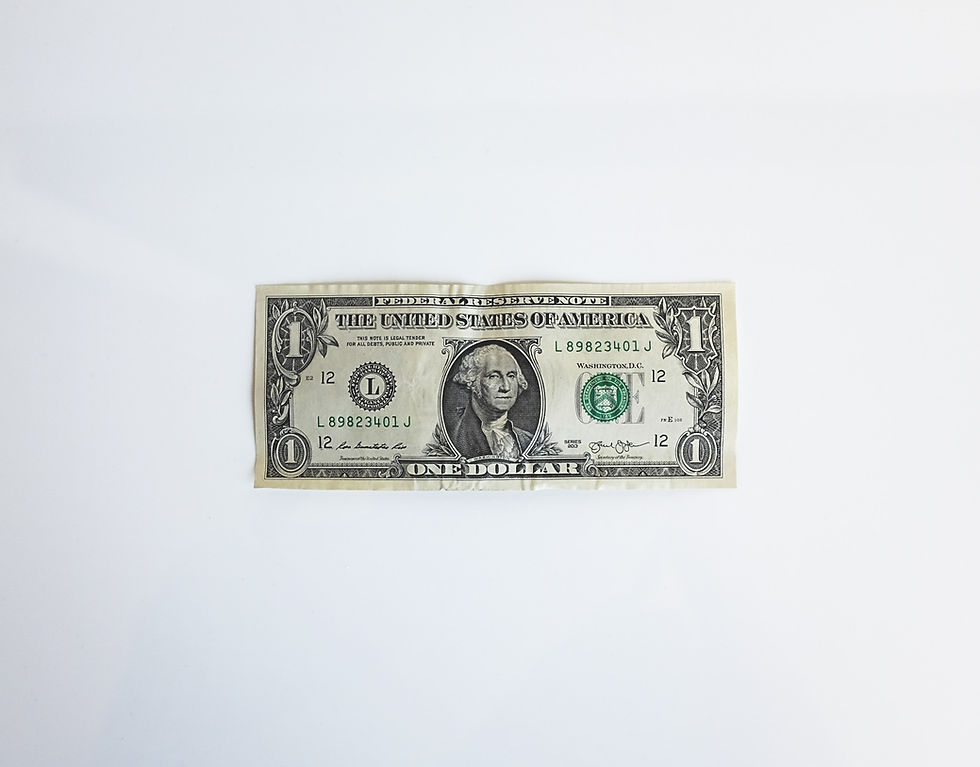The Silent Currency War: Is India Holding the Key to a Global Economic Shift?
- thebrink2028
- May 20
- 6 min read

Dollar, the unchallenged king of global trade, might get dethroned, not by force, but by a quiet, calculated rebellion. A group of rising powers, united under a banner of economic independence, pushing for a new financial order. Yet, one key player, a nation of 1.4 billion with a rapidly growing economy, stands important, refusing to fully join the charge. What’s driving this defiance? And what does it mean for the future of global finance?
The Dedollarization Debate: A Global Power Play Unfolds
The term "dedollarization" sounds like a buzzword from an economic thriller, but it’s a real and growing movement. It refers to the push by some nations to reduce reliance on the U.S. dollar as the world’s dominant currency for trade, reserves, and financial transactions. This isn’t just about swapping one currency for another, it’s about challenging a system that has given one country disproportionate control over global economics for decades. The dollar dominates over 90% of global trade and is central to international reserves, but cracks are forming in its armor. Why? Because reliance on the dollar ties nations to U.S. monetary policies, exposing them to volatility and geopolitical leverage, like sanctions that can freeze assets or cripple economies overnight.
Enter the alliance of emerging economies, call them the "Titans" a coalition including nations like Brazil, Russia, India, China, and South Africa, with recent additions like Egypt, Ethiopia, Iran, and the UAE. This group, representing 42% of the world’s population and a significant chunk of global GDP, is exploring alternatives to the dollar, from local currency trade to a proposed new settlement currency called the "Unit," backed by 40% gold and 60% member currencies. At the 2024 summit in Kazan, these Titans discussed initiatives like BRICS Bridge and BRICS Clear, aiming to create payment systems independent of the dollar-dominated SWIFT network.
The goal?
Economic autonomy and insulation from Western sanctions.
But there’s a twist: one major player in this alliance, India, isn’t fully on board. While others push for a dollar-free future, India is playing a different game, one that could either stabilize or destabilize the global financial order. What’s driving India’s cautious stance, and what does it mean for the world?
#Dedollarization Timeline and Key Events
1971: The Nixon Shock
- The U.S. ends the dollar’s convertibility to gold, leading to a sharp depreciation and global inflation. Oil-producing nations, reliant on dollar-priced oil, face unfair profit distribution, planting early seeds of dedollarization.
2014: Russia’s Response to Sanctions
- Post-Crimea annexation sanctions prompt Russia to reduce dollar-denominated assets to 16% by 2021 and crash dollar use in BRICS exports from 95% to under 10% by 2020.
2015: New Development Bank (NDB)
- The BRICS alliance establishes the NDB, disbursing up to 50% of loans in local currencies to reduce dollar dependency and mitigate foreign exchange risks.
2018: Petro-Yuan Emerges
- China’s Shanghai International Energy Exchange handles 10.5% of global oil trade, with Saudi Arabia and UAE increasing non-dollar oil trades, boosting the yuan’s credibility.
2022: Russia-China Payment Systems
- Russia, excluded from SWIFT, integrates its SPFS with China’s CIPS, creating an alternative payment network for international trade.
2024: Kazan Summit
- BRICS discusses the "Unit," a proposed settlement currency backed by gold and local currencies. India reaffirms its commitment to the dollar, citing economic stability.
2025: India’s Stance Hardens
- India explicitly rejects dedollarization, emphasizing its dollar reserves and U.S. ties, creating a rift within the BRICS alliance.
India’s Calculated Caution: A Strategic Balancing Act
India’s position is a masterclass in geopolitical tightrope-walking. While it’s a key member of the Titans, India has made it clear it has “no interest” in undermining the dollar. Why? The answer lies in a mix of economic pragmatism and strategic diplomacy. India holds significant dollar reserves, and its economy, the world’s third-largest by purchasing power parity ($9.56 trillion), relies on the dollar for stability in trade and investment. Abruptly shifting away could destabilize its markets and spook investors.
India-Russia Trade Challenges
India’s trade with Russia highlights the complexities of dedollarization. During U.S.-Russia tensions, India conducted trade in rubles, strengthening ties. But negotiations for a rupee-ruble exchange rate have stalled, with Russia accumulating billions in rupees it can’t spend due to limited demand. This imbalance shows the practical hurdles of local currency trade, low liquidity and mismatched trade needs make it inefficient compared to the dollar’s universal acceptance.
India’s Foreign Minister has emphasized that the country will use the dollar wherever it’s accepted, resorting to local currencies only when necessary. This stance isn’t just about economics; it’s about maintaining strong ties with the U.S., a key strategic partner. With the U.S. threatening 100% tariffs on nations pursuing dedollarization, India’s caution is understandable. A 2023 report noted that foreign held U.S. debt dropped from 33% in 2015 to 22% by October 2023, signaling growing global skepticism about dollar reliance. Yet, India sees the dollar’s stability as a hedge against this uncertainty.
“India’s approach is pragmatic, not ideological,”
“It’s leveraging it's BRICS membership to gain influence without burning bridges with the West. The dollar’s dominance may wane, but it’s still the safest bet for now.”
What’s at Stake?
Dedollarization isn’t just a currency swap; it has far-reaching implications.
Here’s how it could play out:
1. Global Trade Disruption: A decline in the dollar’s reserve status could reduce demand for U.S. debt, leading to economic instability in the U.S., the world’s largest economy. This could ripple globally, affecting markets from Mumbai to New York.
2. Geopolitical Realignment: Nations like Russia and China are pushing for alternatives like the yuan and ruble to counter U.S. sanctions. But India’s reluctance could fracture the Titans’ unity, potentially empowering China’s yuan to dominate, a scenario India wants to avoid.
3. Economic Opportunities for India: By promoting the rupee through bilateral trade (e.g., India-UAE oil trade) and digital platforms like UPI and RuPay, India is quietly internationalizing its currency without fully abandoning the dollar. This dual strategy could position Mumbai as a global financial hub.
China’s Petro-Yuan Push
Since 2018, China’s Shanghai International Energy Exchange has captured 10.5% of global oil trade, with 14.4% of oil futures traded in yuan. Saudi Arabia and the UAE’s shift to non-dollar oil trades has bolstered the yuan’s credibility. If this trend continues, the yuan could rival the dollar in commodity markets, challenging India’s cautious approach.
What If India Pivots?
Here’s where the plot thickens. What if India, under pressure from its BRICS allies, shifts toward dedollarization? Or what if it doubles down on the dollar, becoming a linchpin for Western financial dominance?
Consider these scenarios:
- Scenario 1: India Leads a Hybrid Model: India could pioneer a multi-currency system, using the rupee alongside the dollar, yuan, and euro. By expanding bilateral currency swaps and integrating UPI globally, India could reduce transaction costs and boost trade with ASEAN, Africa, and the EU, all while avoiding full dedollarization. This would disrupt the binary narrative of dollar vs. non-dollar systems.
- Scenario 2: A BRICS Currency Fails: The proposed "Unit" currency faces hurdles, low liquidity, divergent member interests, and China’s potential dominance. If it collapses, India’s caution could be vindicated, positioning it as a stabilizing force in a fractured alliance.
- Scenario 3: Digital Disruption: Blockchain-based payment systems like BRICS Bridge could revolutionize trade, but India’s digital rupee (e₹) might outpace them. By leveraging its tech prowess, India could create a digital currency ecosystem that rivals China’s yuan-based systems, reshaping global finance on its terms.
The future isn’t about one currency replacing another.
It’s about a fragmented system where digital currencies and regional blocs coexist. India’s tech infrastructure gives it an edge, but it must act decisively.
What’s Happening Now: Indicators to Watch
The dedollarization debate is heating up, and India’s role is under scrutiny.
- Trade Patterns: India’s rupee-based trade with Russia and the UAE is growing but limited by liquidity issues. Watch for new bilateral agreements in 2025.
- Reserve Diversification: India is diversifying reserves into euro, yen, yuan, and gold, reducing dollar reliance without abandoning it.
- U.S. Policy Shifts: With U.S. tariffs looming, India’s balancing act will be tested. A 2024 report warned that U.S. sanctions could disrupt India’s tea and rice exports to Iran, highlighting the risks of dollar dependence.
The Future: A Multipolar Monetary World?
The dedollarization debate isn’t about a single currency winning, it’s about a multipolar world where power is redistributed. India’s cautious stance could either anchor global stability or delay an inevitable shift. If the Titans’ initiatives like BRICS Bridge succeed, they could create a parallel financial system, reducing the dollar’s 84.3% share in cross-border trade. But if India’s reluctance prevails, it might slow this momentum, preserving the dollar’s dominance for another decade.
What if India uses its digital rupee to lead a new financial order?
By integrating UPI and RuPay into global trade, India could bypass both the dollar and the yuan, creating a tech-driven currency bloc. This would disrupt the traditional narrative of currency wars, positioning India as a pioneer in a digital-first economy.
The global financial system is at a tipping point. India’s next move could either stabilize the old order or ignite a revolution. Stay connected to thebrink, watch the indicators, and prepare for a world where the rules of money are rewritten.
-Chetan Desai (chedesai@gmail.com)


